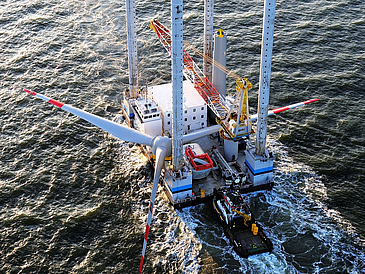Hard work and back breaking effort, which at the same time calls for utmost precision: rotor blades for wind turbines are still mostly made by hand. Huge sheets of glass or carbon fiber composite measuring as much as 130 square meters have to be laid crease-free into a mould and then coated with layers of resin. Once hardened, other elements have to be connected before the perfect wing finally emerges. The results of a research project at the University of Bremen’s Institute of Integrated Produkt Development [Institut für integrierte Produktentwicklung (BIK)] will in future make the work of rotor blade manufacturers much easier.
Scientists from the University of Bremen’s Faculty of Production Engineering submitted a convincing project proposal to the German Ministry of the Environment, which subsequently decided to fund their research in an amount of € 600,000 within the context of the 5th Energy Research Program. The project will run for 30 months at a total cost of around € 950,000. Other project partners are the specialists for engineering textiles SAERTEX GmbH & Co. KG and the rotor-blade manufacturers PN Rotor GmbH.
A large-scale project with a long title: "Process for Pre-Form Manufacture via Level Laying for a Spatial Component on the Basis of an Automated Process Chain for Rotor-Blade Production" , or "mapretec" for short. The objective is to advance automation in the production of rotor blades by incorporating state-of-the-art manufacturing systems. Rotor blades are made mainly from continuous fiber-reinforced synthetic resins. The large number of reinforced-fiber layers and the time as well as labor-intensive effort involved in laying up the moulds makes production extremely costly.
Optimal results with the aid of computer, sensors and perform engineering
A rotor blade made for one of the wind turbines in Germany’s first offshore wind park "alpha ventus" 45 kilometers off the island of Borkum is 56.50 meters long, weighs 16 tons, and comprises several separately formed elements made of fiber reinforced composites. The elements of these blades comprise up to 200 separately prepared layers of reinforced glass- and carbon-fiber composite, which all have to be joined together. The layers must be "draped" into a mould and then bonded together and hardened using synthetic resins. "The art is to lay up the mould keeping the composite sheets in one place and completely free of creases", says project leader, Dipl.-Wirtsch.-Ing. Jan-Hendrik Ohlendorf. The project focuses on how to achieve this more efficiently.

